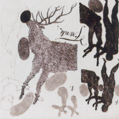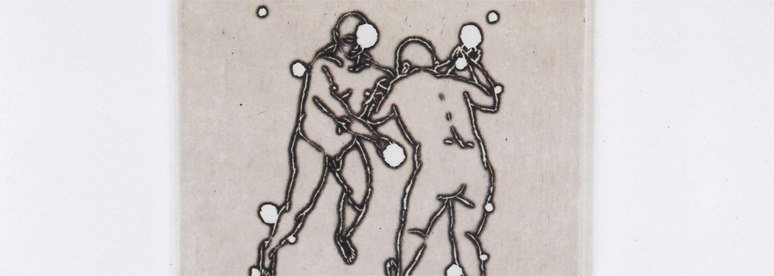PAST 17th STREET GALLERY EXHIBITION - OAS MAIN BUILDING

Cabinets of Curiosities
Artwork by José Anotonio Suárez
October 11, 2001 – November 30, 2001
AMA | OAS Gallery
OAS Main Building
17th Street, NW (Corner of Constitution Ave.)
Washington, DC 20006
THE EXHIBITION
This exhibition brings to Washington a series of drawings by Colombian artist José Antonio Suárez, in which the artist expresses a refined vision of the world, one in which the eye sees and the imagination interprets.
Suárez is a draftsman who images stories, a chronicler who is constantly making meticulously detailed notes on what surrounds him – the works of admired masters or his own imaginings. He interprets the world in relation to his personal biography and resides in the universe of figuration where his personages confront the territory of paper.
Born in 1955 in Medellín, Colombia, Suárez spent three years studying biology at the university in Antioquia, only to spend the next sex years in Geneva, Switzerland, obtaining a diploma and postgraduate degree from the École Supérioure d’Art Visuel. Suárez normally works on small pads of paper, filling his drawings with annotation and commentary. In 1998, he participated in the Biennial of Sao Paulo in Brazil and also has exhibited in San Juan, Puerto Rico; Jakarta, Indonesia; Buenos Aires, Argentina; Havana, Cuba; Germany; and Canada.
Suárez returned to his native Colombia in 1984. While the dominant trend of the day involved large-scale conceptual works, Suárez continued to produce meticulously detailed, tiny drawings. His thematic history encompasses the portrait, a wide range of art historical references, the contemporary state of man, and reflections on his own image.
Like a study of a secret or a precious gem, Suárez has created a language, which has developed within a dimension of intimacy and a conviction in millimetric perfection. Like annotations from a diary, he obtains a narrative where the image follows the norm of adfmired master artists. As Goya said, “from the imagination, accomplished by reason, marvels are created.” It is line that constructs an impeccable figurative universe.
Suárez works everyday, and more or less all the time. His workplace is an enormous table which also serves as a desk – and he has multiple desks all over the world to work from. He works with the eye of a botanist and curiosity of a biologist, with the rationality of a chemist and the sensitivity of an artist. He enjoys meeting his work head on with the mental rigor of the classical tradition.
Suárez has a way of looking at the world that brings to mind the traveler-reporter artists of the 19th century who were interested in inventorying multiple situations at once. Everything ends up in Suárez’s daily chronicles – from the form of a leaf and an animal in miniature to the aesthetic pose of Degas’ “Little Fourteen-year-old Dancer.” He takes up history in a manner akin to Pedro Figari who said “evocation is the idealization of the past. We go along integrating our psychic personality with the images and states of consciousness (and subconscious) we have accumulated. And it is thus that our personality is modeled on the background of it own structure, on which innumerable factors of all types have intervened. All of these images and states of consciousness form a sediment which is presented to us transformed, idealized…”

